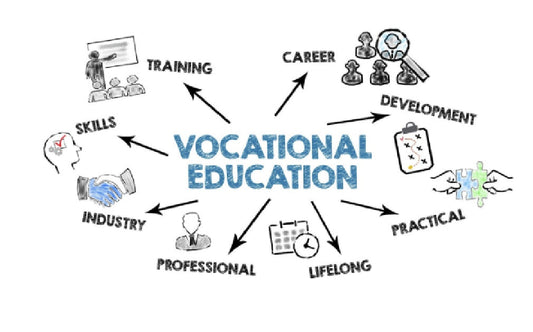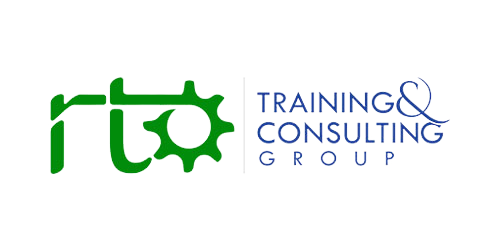Australia’s next decade of digital productivity won’t be written in a lab so much as assembled on a shelf. That is the quiet revolution signalled by Amazon Web Services’ new AI agent marketplace, unveiled at the AWS Summit in New York. Instead of every organisation building bespoke systems from scratch, a growing share of “intelligence” can now be procured like software—selected, configured and deployed inside a compliant cloud environment. The announcement pairs a central catalogue of production-ready agents with Amazon Bedrock AgentCore, a new layer for securely operating agentic systems at scale. For a country that prizes practical outcomes and safe adoption, this is the shape of AI as infrastructure: plug-in capability, governed by policy, and measurable in results.
From app store to “AI store”
The marketplace takes the familiar logic of a mobile app store and applies it to autonomous software agents—systems that can plan, call tools and act on a user’s behalf with human oversight. At launch, AWS introduced a dedicated “AI Agents and Tools” category inside AWS Marketplace, positioning it as a one-stop shop for enterprises to find, buy and integrate agents across functions from customer support and document intelligence to supply-chain optimisation and fraud detection. Crucially, the catalogue is wired to AWS procurement and billing, which means the hardest parts of corporate AI adoption—security reviews, contracting, vendor onboarding—are bundled into a path that business units already understand. Reporting around the launch put the initial inventory at more than 900 listings, spanning pre-built agents, orchestration frameworks and guardrail components, with integrations designed to click into Bedrock’s new AgentCore runtime.
That “runtime” matters because it closes the gap between clever demos and resilient systems. AgentCore isn’t a model; it is the scaffolding that serious deployments demand: memory and identity services, observability, permissioning, and safe tool use across APIs and data stores. In other words, it is where governance and engineering live, making it possible to scale agents without reinventing the same controls in every project. AWS introduced AgentCore in tandem with Marketplace so customers can move from discovery to deployment without falling into a months-long integration trench.
Why Anthropic’s role changes the equation
AWS tied the launch to a deepening partnership with Anthropic, the San-Francisco research lab behind the Claude family of models. Claude already runs as a managed option on Amazon Bedrock, and “Claude for Enterprise” is now purchasable directly through the Marketplace, allowing customers to standardise on procurement and governance while letting teams build their own domain-specific agents. Reports over winter pointed to Amazon’s total stake in Anthropic rising into the multi-billion-dollar range, an alignment that helps AWS anchor safety-oriented capabilities in a marketplace meant for regulated industries. In practical terms, Australian customers see that as two things at once: a credible model choice with conservative defaults, and a cloud provider with skin in the safety game rather than a mere hosting role.
The partnership is not abstract. Enterprise case studies show Claude already embedded in scientific search and knowledge workflows, including at Pfizer, where teams use Anthropic models via Bedrock to interrogate internal documents securely. For local buyers weighing trust alongside value, the lesson is that the marketplace isn’t a greenfield of unproven startups; it is a corridor into tools that are already earning their keep inside large, audited environments.
How it works in practice
A developer or ISV lists a specialised agent—say, a contract-review assistant that reads clauses against policy, or a predictive operations agent for logistics. The listing describes model options, required permissions, data residency choices and observability hooks. A customer searches the catalogue, checks legal and security notes, spins up a trial inside a sandboxed AWS account, and, if the pilot holds, clicks into a standardised purchase workflow. Revenue sharing mirrors familiar marketplace economics, which incentivise continuous upgrades and support rather than one-off project revenue. Because listings are wired to Bedrock’s agent services, teams can add human-in-the-loop steps, attach guardrails and confine the agent to approved tools and data. The headline is not that this was impossible before; it is that the friction drops from months to days, and the variability that so often spooks risk officers is replaced by predictable patterns.
The breadth is already visible. Coverage by enterprise and channel media highlights agents aimed at procurement and finance, marketing analytics, security automation, customer support, and sector-specific needs like regulatory reporting or ESG data extraction. For small and mid-sized businesses—Australia’s backbone—the shift is especially important. An SME that could never justify a bespoke AI programme can now subscribe to a vetted agent, point it at their data, and get measurable uplift without hiring a machine-learning team. For larger enterprises, the model turns a portfolio of AI “proofs of concept” into an operating catalogue, purchased and governed at scale.
The competitive context
AWS is not alone in chasing the agent economy. Microsoft is weaving agentic patterns into Copilot Studio and Azure, Google is pushing agent directories through Vertex, and Salesforce is extending Einstein in the direction of workflow-aware assistants. What differentiates AWS at the moment is the combination of marketplace scale, a security-first runtime in AgentCore, and a credible model bench that includes both Claude and Amazon’s own Nova family, backed by custom silicon and an increasingly opinionated data stack. The messaging from the New York summit was intentionally sweeping—AWS executives framed agents as a “tectonic” change in software, and paired the launch with new primitives like Amazon S3 Vectors to make retrieval cheaper and easier at cloud scale. Whether or not one shares the rhetoric, the architecture points to a coherent bet: intelligence belongs inside procurement and platform engineering, not only inside labs.
What this means for Australia’s economy
Australia’s tech debate often gets stuck between fear and feasibility. The marketplace reframes both. On feasibility, it lowers the cost of trying. A regional health provider can pilot a secure triage agent without a two-year programme; a logistics operator can deploy delay-forecasting that actually talks to their TMS; a university faculty can test assessment-support agents with transparent guardrails and audit trails. On fear, it brings AI into familiar governance regimes—procurement, vendor risk, information security—where obligations are understood and enforceable. For sectors that carry more compliance weight—financial services, healthcare, education and government—the Anthropic alignment and Bedrock controls will matter in boardrooms that must evidence care as much as they celebrate speed.
There is also a macro story. As more capability is consumed via marketplaces, the economic unit shifts from multi-year “transformation” to ongoing service substitution. That plays to Australia’s strengths in adoption and integration, provided we invest in the right skills: vendor selection, data governance, prompt and tool design, workflow mapping, and measurement. It also dovetails with a domestic debate about data-centre growth, because agent proliferation, if unmanaged, drives retrieval and inference costs. The good news is that AWS is pushing more on-device and efficient inference options across the ecosystem, and Bedrock’s controls make it easier to constrain where and how models run. The hard news is that cost and sustainability still depend on choices we make locally about architecture and workload placement.
The hard problems the marketplace does not solve for you
A catalogue can reduce friction; it cannot outsource judgement. Australian publishers and rights holders will watch closely as agents learn to summarise and act on web-scale information. If the economics of linking and attribution erode—as they did under generative search—expect louder arguments about licensing, provenance and compensation. Procurement convenience also risks sprawl. Without a platform team curating approved agents and enforcing patterns for data access, identity and observability, organisations will accumulate lots of little black boxes. The remedy is mundane and essential: treat agents like any other production system, with lifecycle management, SLOs and decommissioning. And then there is culture. Automation without transparency corrodes trust; automation with clear hand-offs, audit trails and easy escalation becomes a relief, not a threat. None of that ships in a listing; it is leadership work.
A turning point for VET and workforce training
For Australia’s VET sector, the marketplace is not only a procurement story; it is a curriculum. If agents become a standard way of delivering capability, then “AI literacy” means something more specific than familiarity with chatbots. It means graduates who can evaluate a listing against a problem statement, map the agent’s tool calls into an existing workflow, configure guardrails in Bedrock, prove data minimisation, and present an outcomes dashboard that a non-technical manager can trust. It also means teaching students to design “human-in-the-loop” steps that prevent silent automation of consequential decisions. In practice, that looks like assessment tasks where learners must integrate a Claude-powered agent from Marketplace, document the privacy impact, and stage a live demonstration that shows fallbacks and escalation paths. It looks like units on vendor risk and model choice, where students compare Claude with other models for a given use case and justify the trade-offs in writing. It looks like short, applied micro-credentials for incumbent workers—operations, compliance, frontline service—so the benefits of agents land beyond the head office.
Early usage, real names
Sceptics will reasonably ask who is using this, and for what. On the life sciences side, AWS has documented how Pfizer teams already ride on Bedrock to interrogate internal documentation with Claude as the reasoning engine. In aviation and travel, companies tied to AWS modernisation programmes are signalling a shift from migration to intelligence, with customer-facing and operational agents next on the roadmap. The point is not to force every narrative through a single vendor. It is worth observing that marketplace distribution is becoming a plausible way for large enterprises to standardise AI adoption without spraying experiments across a dozen contracts.
Guardrails, not handcuffs
Responsibility will define the marketplace era as much as performance. The most mature buyers are writing two documents before they ever click “subscribe”: a plain-English acceptable-use policy for staff and vendors, and an internal playbook for safe deployment that sets red lines, testing protocols and rollback procedures. On the platform side, AgentCore reduces the amount of glue code customers must build to get identity, memory scoping, and observability right. On the people side, organisations should be explicit about human oversight—where it sits, when it triggers, how it is recorded—and insist on vendor disclosures about data handling, model updates and known failure modes. Those expectations are not anti-innovation; they are the cost of durable trust in schools, hospitals, banks and government.
The bottom line
AWS’s agent marketplace and AgentCore are less about a single product win than about normalising a pattern: discoverable, governable intelligence that you can drop into work the way you once dropped in apps. In New York, AWS pitched agents as the most consequential change since the commercial internet. That may read as theatre. It also masks a quieter, more Australian point: this is what progress looks like when it meets procurement. The ideas become standard forms, provable controls, and live dashboards. That is where confidence grows. And if confidence grows, adoption follows—across SMEs that finally get leverage, across large enterprises that turn pilots into platforms, and across a VET system that teaches people not just to use AI, but to run it.


































